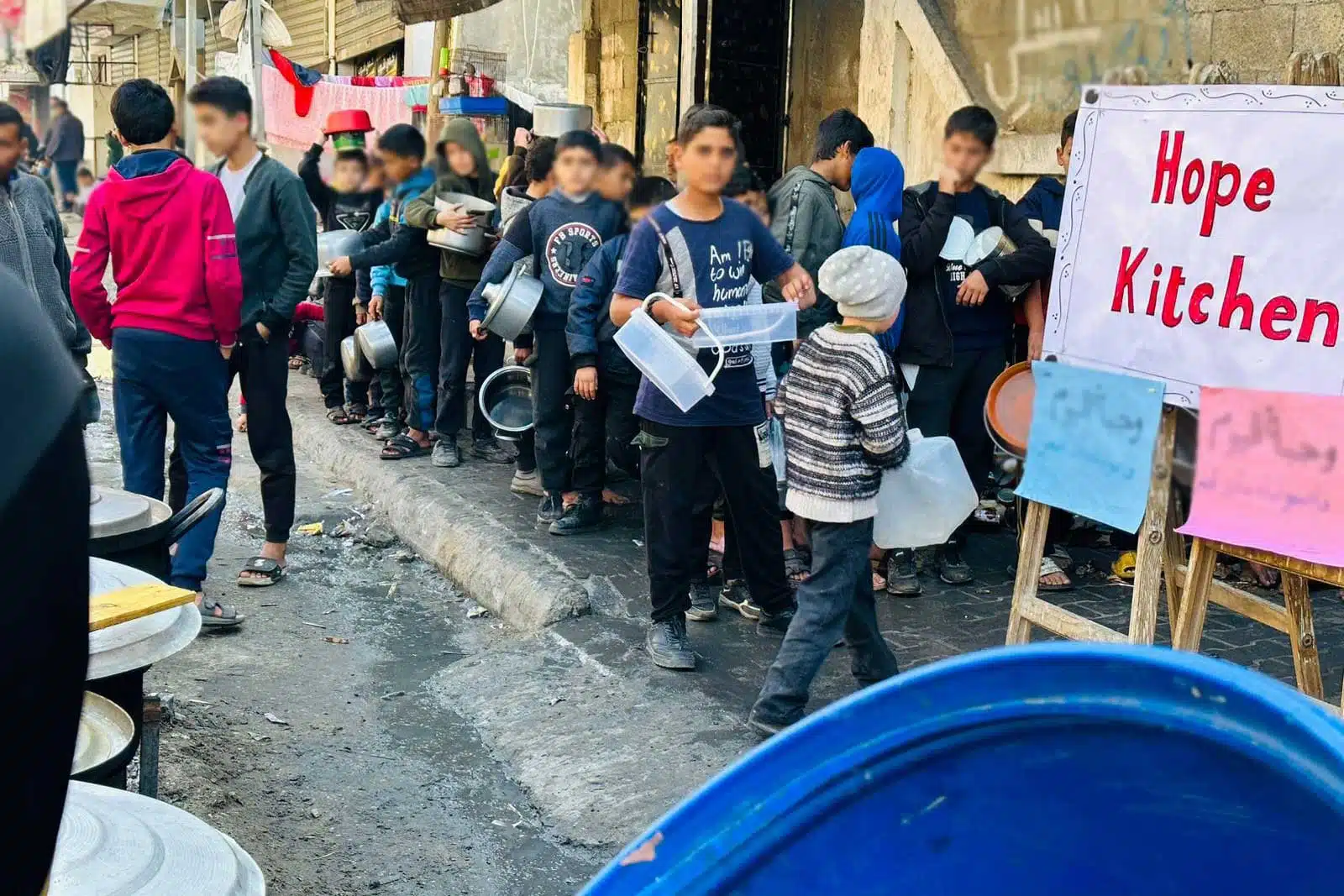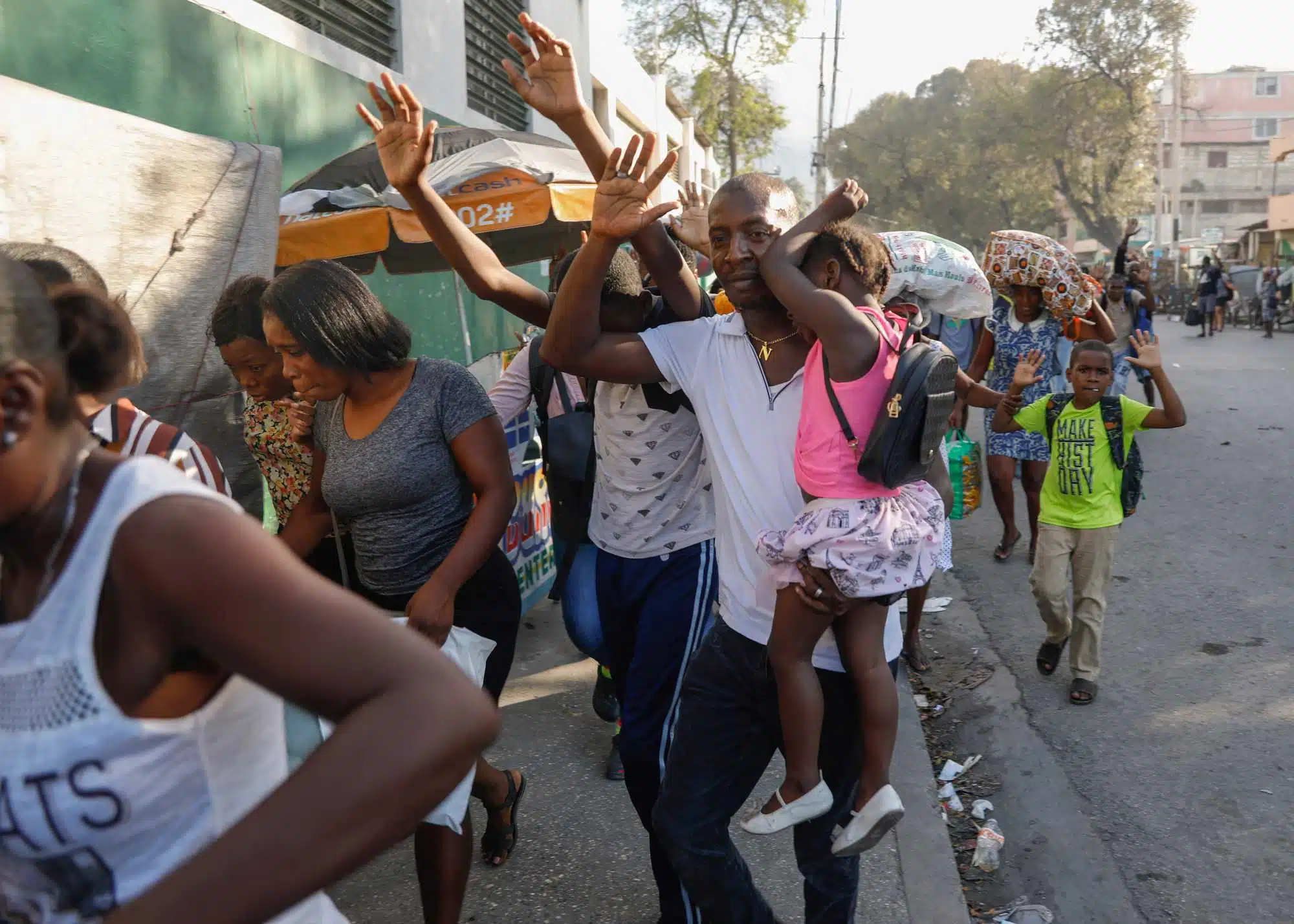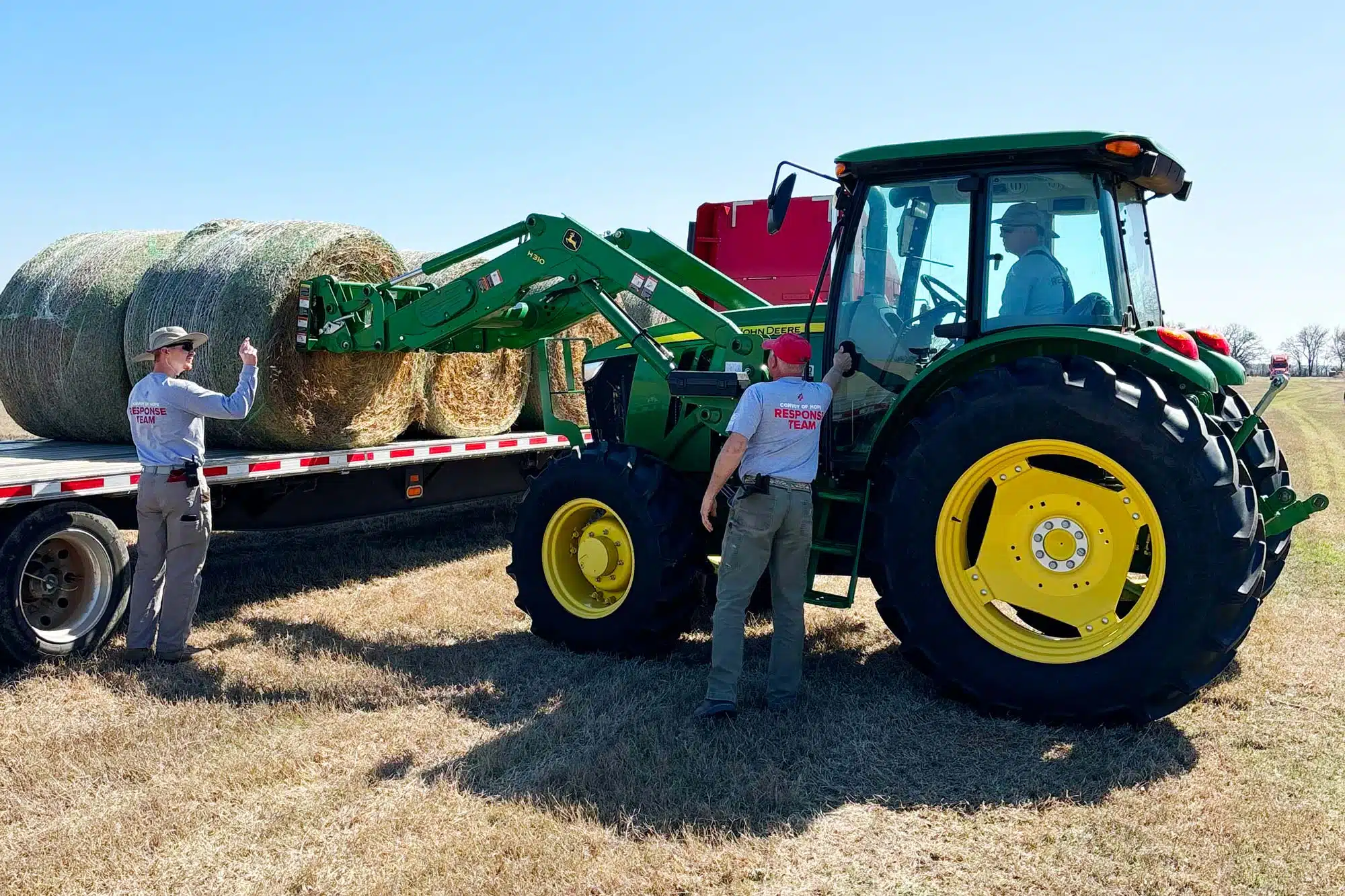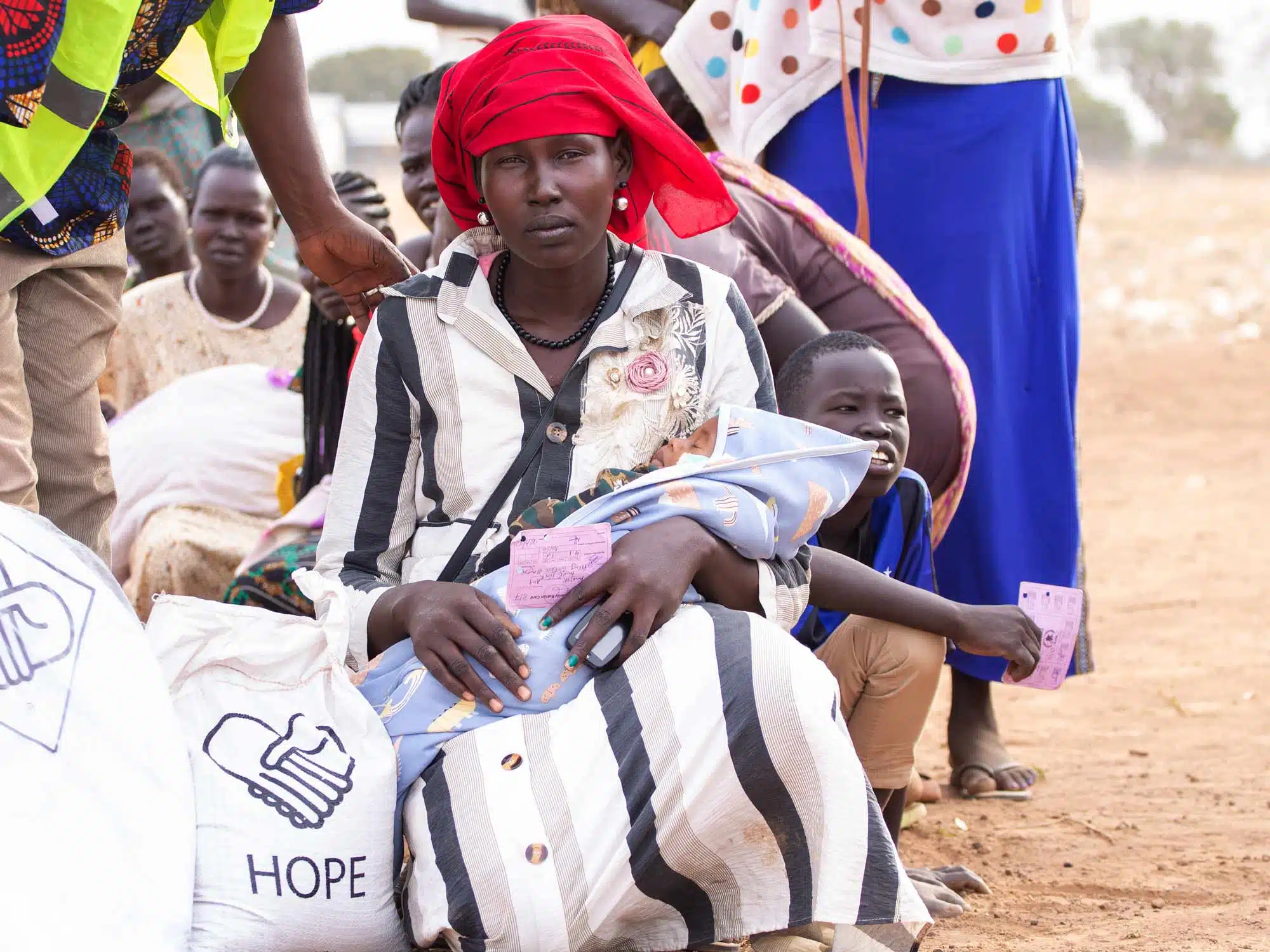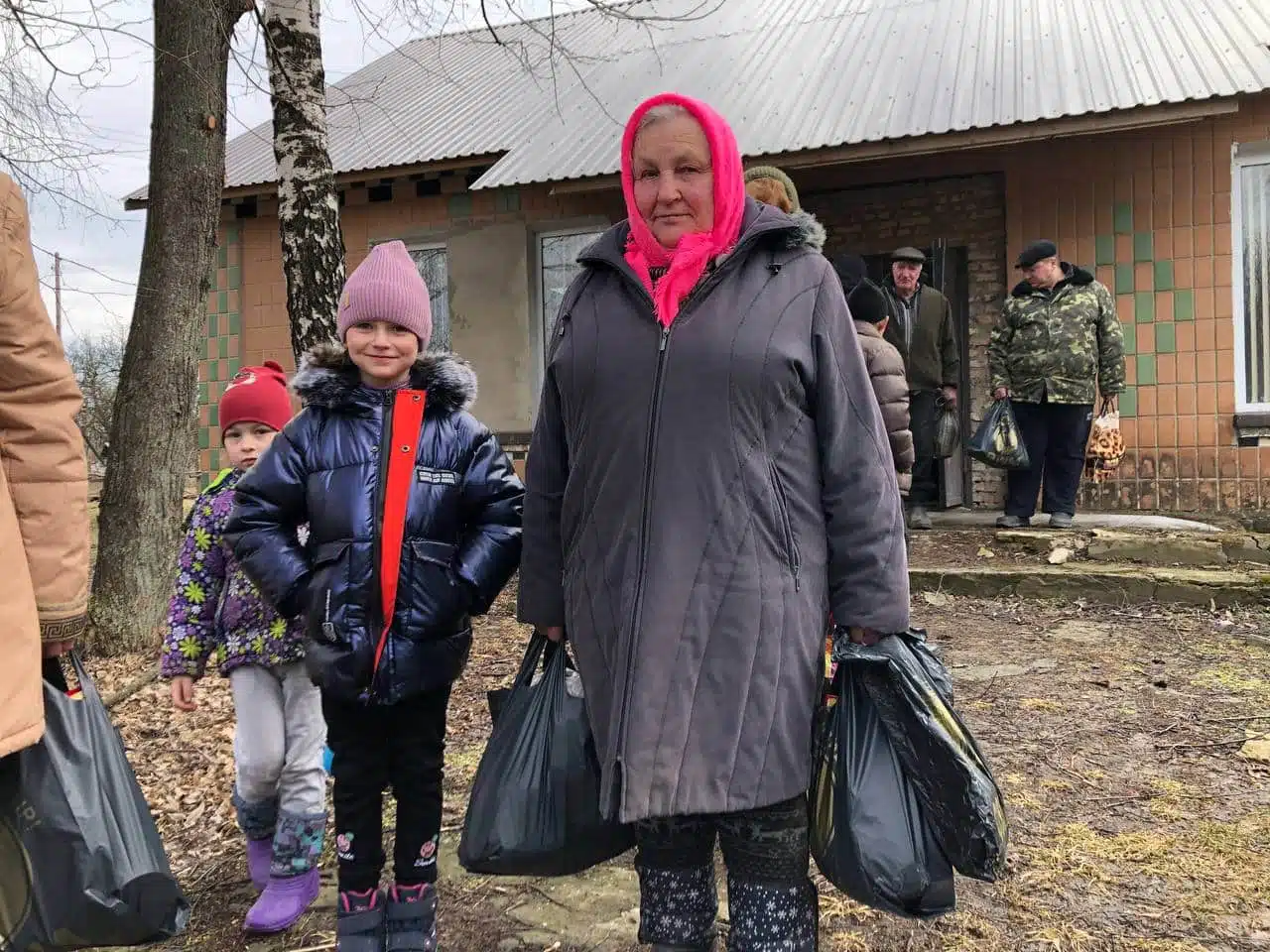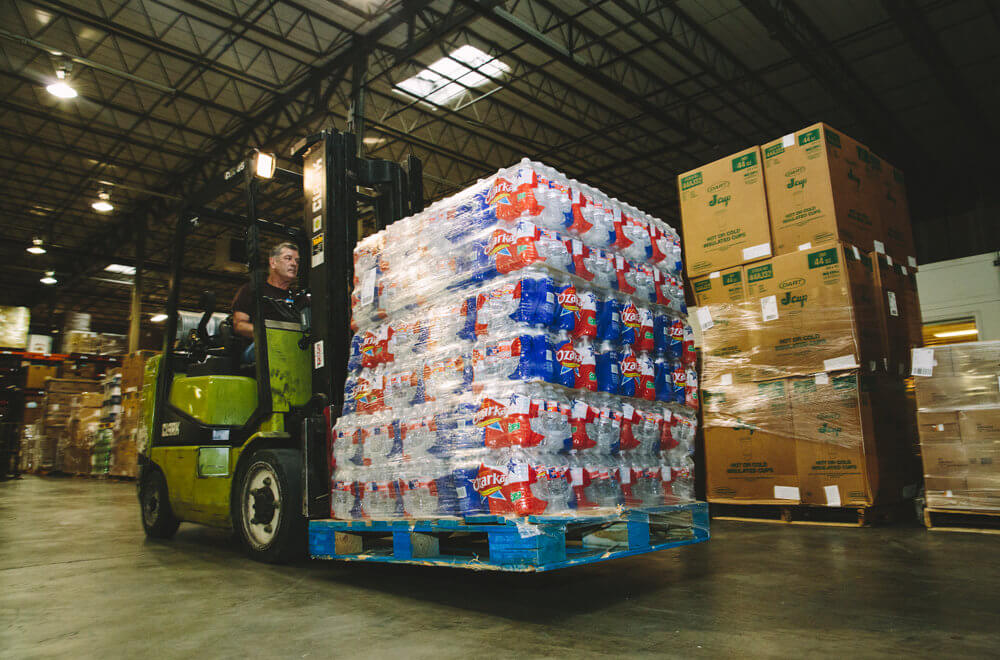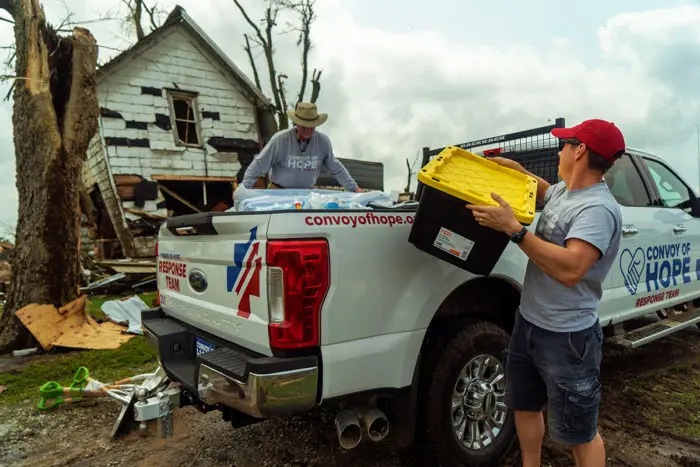
As tornado season begins across the U.S., Convoy of Hope is keeping a close watch on the weather to ensure we can respond when disaster strikes. One of the most important things you and your family can do to stay safe during a natural disaster is to prepare ahead of time. Staying educated about terminology and the factors that contribute to tornadic weather will keep you prepared.
According to the National Weather Service, approximately 1,200 tornadoes develop every year. The 2020 storm season brought severe tornadoes that impacted Columbus, Mississippi; Lee County, Alabama; and Monroe, Louisiana — all of which led to responses from Convoy of Hope.
The severity of a tornado is measured by the “Enhanced Fujita Scale,” generally abbreviated as “EF”, and ranks a tornado’s threat level from zero to five. An EF-0 tornado brings wind gusts between 65 and 85 miles per hour and may cause light damage to siding, gutters, and tree limbs. An EF-5 tornado comes with wind gusts in excess of 200 miles per hour and can level houses, uproot trees, and throw vehicles.
Although meteorologists can forecast conditions that may be favorable for tornadic activity, they can’t predict tornadoes. For that reason, preparation is the best precautionary measure you can take to protect yourself and your loved ones in the event a tornado strikes.
“Preparedness is not merely putting aside a case of water and some ramen noodles,” Convoy of Hope’s Disaster Services team says. “It requires us to think through scenarios, try to anticipate potential needs, and take practical action toward preparing for those needs.”
Convoy of Hope’s Disaster Services team recommends that you:
- Create a preparedness kit.
- Include one gallon of water per person for three days, and three days worth of non-perishable food per person.
- Add flashlights, blankets, shoes, and rain gear for each person.
- Account for personal hygiene items by including a one-gallon, seal-able bag of necessary items per person.
- Be sure to include one weeks worth of vital prescriptions.
- Use portable, waterproof storage to house important documents. They could be digital or physical copies that you entrust to a loved one.
- Create a family communications plan. Be sure you have a plan to contact family members if you are not together when a disaster occurs. Plan ahead for the possibility that there might not be cell service or internet.
- Stay educated and aware of your surroundings.
- Explore the possibility of first aid, CPR, and other disaster preparedness courses.
- Remain up-to-date on weather monitoring.
- Apps like Emergency Red Cross and NOAA Weather Radar can help.
If you find yourself in the immediate path of a tornado, the National Weather Service and the CDC recommend the following steps.
- Note indicators of an approaching tornado. Indicators often include large hail, a loud roar that sounds like a train or a jet engine, and an exceptionally dark or green-colored sky.
- Plan a route for you and your loved ones to get to shelter.
- If you’re indoors, get to the lowest floor of the structure. Next, find the innermost point of the building to put as many walls as possible between yourself and the outdoors.
- Avoid windows. Do not try to open windows to let the wind blow through.
- Use whatever padding or protective gear you can to shield yourself from flying debris.
- If you’re outdoors, lie flat in a ditch, culvert, or another low lying area and cover your head.
Planning ahead for inclement weather is vital for safety. Convoy of Hope consistently hears the sentiment, “We never thought it would happen to us,” when they talk with those affected by a disaster. With a bit of preparation, you can provide peace of mind and an extra measure of protection for your and your household.
As you think through your disaster preparedness plan, click here to download our Family Preparedness Guide for more important information to help you plan ahead.
